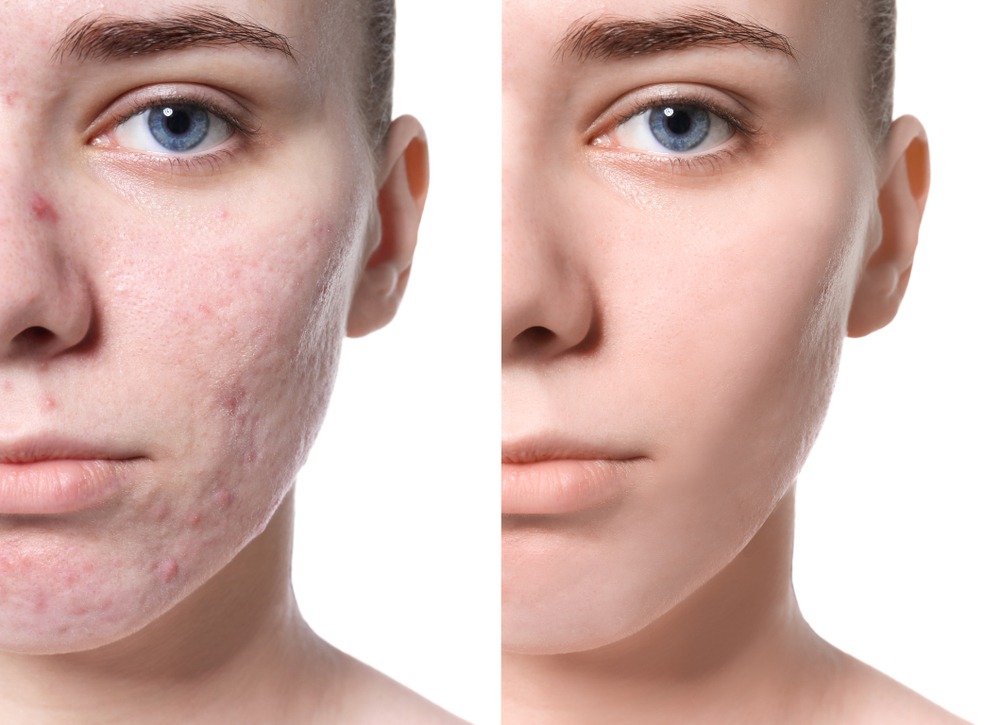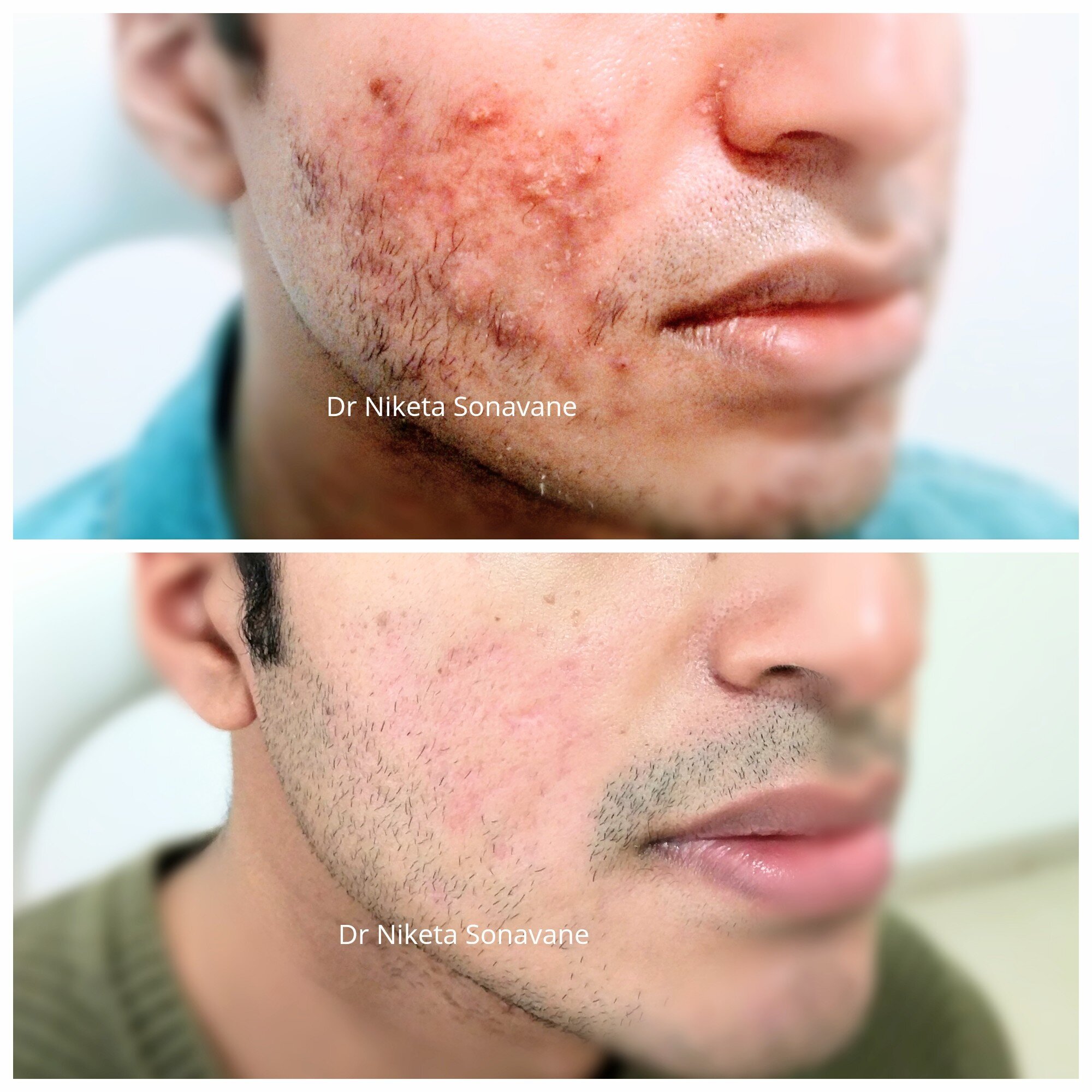Reliable Acne and Acne Scars Treatment: Clear Skin Solutions That Work
Reliable Acne and Acne Scars Treatment: Clear Skin Solutions That Work
Blog Article
Discovering Skin Disease: Treating and identifying Acne Scars for Healthier Skin
Acne scars represent a considerable problem for individuals looking for to preserve healthy and balanced skin, as they can affect both look and self-worth. Comprehending the various types of scars, from atrophic to hypertrophic, is important for figuring out suitable treatment options. While professional treatments like chemical peels and microneedling can be efficient, the importance of individualized care strategies can not be overemphasized. Preventative steps play a critical duty in reducing future scarring. As we discover these aspects, one must think about how the best approach can bring about transformative results.
Understanding Acne Marks
Recognizing acne scars is important for any person who has experienced severe acne, as these marks can have a long-term influence on both physical look and mental well-being. Acne marks develop when the skin undertakes inflammatory actions during active acne sores. The severity of scarring is commonly influenced by elements such as the kind of acne, its period, and specific skin features.
The body's all-natural recovery procedure can result in either atrophic scars, which appear as depressions in the skin, or hypertrophic scars, which are increased and result from overflow of collagen. Additionally, the psychological toll of acne scars should not be ignored; many individuals report feelings of humiliation, anxiety, and lowered self-esteem. This psychological concern can influence social communications and overall lifestyle.
Attending to acne scars calls for a comprehensive understanding of their development and influence. Awareness of the possibility for lasting effects related to unattended scars can encourage individuals to look for suitable treatments. Early intervention and efficient management techniques can significantly boost skin appearance and boost psychological resilience, highlighting the importance of comprehending the intricacies bordering acne scars.
Types of Acne Marks
Acne scars can be classified into unique kinds, each showing one-of-a-kind features and requiring details treatment techniques. The main kinds of acne scars consist of atrophic, hypertrophic, and keloid marks.

Hypertrophic marks, in comparison, are raised above the skin level and are the result of extreme collagen production throughout the recovery process. They typically continue to be within the borders of the initial acne lesion. Keloid scars are comparable yet expand past the initial injury site, developing larger, increased locations that can be painful or scratchy.
Comprehending these kinds of marks is important for picking proper treatment choices. Different scars may react far better to certain treatments, such as laser therapies, fillers, or medical interventions, highlighting the value of a customized strategy to acne mark management.
Determining Your Marks
When assessing the appearance of your skin, it is vital to accurately determine the sort of marks existing, as this will certainly inform the most reliable treatment method. Acne scars generally come under two groups: hypertrophic and atrophic marks. Atrophic marks, which are one of the most typical, appear as depressions or indentations on the skin. These can further be categorized into ice-pick scars, boxcar scars, and rolling marks, each displaying distinctive characteristics and requiring various techniques for evaluation.
Hypertrophic scars, on the various other hand, are increased and happen due to excessive collagen production during the recovery process. Recognizing the particular attributes of your scars-- such as width, deepness, and appearance-- is vital for correct recognition. Additionally, take into consideration the circulation of marks across your skin, as this can show the severity and period of the acne Full Article condition.
Involving with a skin doctor can offer valuable insights right into the nature of your marks, helping in the differentiation between numerous kinds. A detailed understanding of your marks will inevitably lead to an extra customized and efficient therapy plan, making certain a more clear and healthier complexion.
Therapy Choices Offered
Determining the details type of acne scars present on your skin lays the foundation for checking out reliable therapy choices. Usual sorts of acne scars consist of atrophic (depressed), hypertrophic (elevated), and post-inflammatory erythema.
For atrophic scars, alternatives such as chemical peels, microneedling, and laser resurfacing are commonly used. Chemical peels make use of acids to eliminate the external layer of skin, promoting new cell development. Microneedling entails little needles that develop micro-injuries, promoting collagen production. Laser resurfacing targets harmed skin cells, improving appearance and tone.
Hypertrophic marks can be treated with corticosteroid shots to squash the mark or laser treatment to decrease redness and enhance appearance. skin rejuvenation treatments. Silicone gel sheets and stress dressings may also assist in managing increased marks
On top of that, dermal fillers can momentarily fill out clinical depressions from atrophic scars, while surgical excision might be ideal for severe instances. Each treatment option has its benefits and factors to consider, making it necessary to consult with a dermatologist. They can offer customized recommendations based on the type and seriousness of your marks, as well as your skin kind and total health.
Tips for Prevention
Efficient avoidance approaches can substantially decrease the chance of developing acne marks. Using non-comedogenic products helps avoid clogged pores, which can aggravate acne.
Avoiding need to pop or pick acne sores is important, as this can cause deeper skin damage and raise the danger of scarring. Instead, take into consideration using a cold compress or over the counter treatments to reduce swelling and soreness.
Sunlight security is another important facet of avoidance; ultraviolet (UV) rays can darken you can try these out scars and prevent the healing procedure. Using a broad-spectrum sun block with at least SPF 30 daily can secure the skin and advertise also recovery.
Last but not least, maintaining a well balanced diet regimen rich in antioxidants, minerals, and vitamins supports skin health and recovery. Remaining moisturized and handling stress levels can additionally play a significant function in minimizing acne flare-ups. By implementing these strategies, individuals can considerably minimize their chances of creating acne marks.

Conclusion
In conclusion, understanding and recognizing acne scars is crucial for efficient treatment look at here now and achieving healthier skin. Different kinds of acne marks, including atrophic and hypertrophic scars, necessitate certain interventions customized to specific needs.
The body's all-natural recovery process can result in either atrophic scars, which show up as clinical depressions in the skin, or hypertrophic marks, which are raised and result from overflow of collagen. They are more divided right into 3 subtypes: ice pick marks, boxcar marks, and rolling marks. Acne marks usually drop right into 2 categories: hypertrophic and atrophic marks. These can better be classified into ice-pick marks, boxcar marks, and rolling marks, each displaying distinct attributes and calling for different strategies for assessment.
Various types of acne scars, including atrophic and hypertrophic marks, require certain interventions customized to individual demands.
Report this page